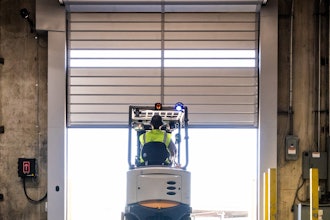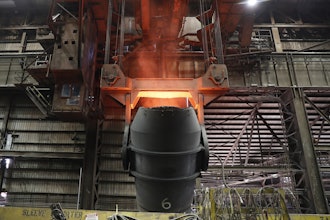
Although it’s been nearly five years since the COVID-19 pandemic began, the ramifications of its impact on supply chains and market demand continue to reverberate through the distribution sector.
For MiddleGround Capital, a Lexington, Kentucky-based private equity firm focused on middle-market B2B companies across the industrial and specialty distribution segments, that has meant maintaining discipline in order to ensure inventory levels and pricing strategies stay in check.
But as demand begins to normalize, MiddleGround – whose portfolio includes tool supplier Starrett and metals distributor Banner Industries, among others – is looking to make sure its companies can identify and pursue new opportunities, as well.
Christen Paras, a partner at MiddleGround who leads the firm’s transaction team and serves on its investment committee, recently visited with ID to discuss the state of specialty distribution — and why a slower M&A market is showing signs of life heading into the new year.
Industrial Distribution: What are some of the main challenges distribution businesses are facing? How have they been addressed?
Christen Paras: A distributor’s ability to be a reliable source of products with a strong supply chain and highly efficient logistics and operations is crucial. Extensive supply chain disruptions and demand volatility driven by the COVID-19 pandemic threw many industries off balance, and distributors are still recovering.
Supply chain constraints and long lead times, coupled with increased demand, led to many distributors overstocking during the pandemic. While distributors wanted to ensure reliable supply for customers, the pandemic was very quickly followed by a prolonged period of decreased demand and inflation. Excess inventory needed to be destocked, leading to pricing pressure. For certain industries, where the entire value chain was hurting, this led to extreme discounting and liquidations. Some distributors also extended customer payment terms as another way of becoming a preferred supplier in the face of market softness. This further exacerbated liquidity constraints many distributors were facing and further prevented them from purchasing higher quality inventory.
We’ve had to be very disciplined on pricing across our portfolio to rectify some of these issues. It is a delicate balance between the need to be competitive in the marketplace and making enough margin in the transactions we pursue. We have also taken a surgical approach to purchasing, ensuring our portfolio companies have high-quality inventory at appropriate fill rates to meet customer demand while avoiding excess stock. For our distribution companies that have faced these issues, key focus areas for us have been getting inventory into a healthier position and taking a disciplined look at our cost structures, making changes where needed.
For other distributors that were able to pass through price increases during the pandemic, not all of them are having to give it back in the face of lower volumes. The more engineered or complex the product set is, and less obviously correlated with underlying commodity prices, the better they have been able to fare. For others that operate within consumer discretionary verticals, we have seen more pricing pressure.
ID: Which particular specialty distribution segments is MiddleGround focused on, and why?
 Christen ParasMiddleGround Capital
Christen ParasMiddleGround Capital
Specific examples include helping smaller suppliers reach a broader customer base, providing a service or process that customers don’t want to bring in-house, technical sales expertise, drop-shipping capabilities, data analytics or other technology tools that enhance the customer experience.
ID: What does specialty distribution look like as we head into 2025?
CP: The difference in underlying demand varies by end market. Across several of our portfolio companies, we are seeing demand return to more normalized levels in 2024 and into 2025, with some buyers behaving more cautiously as they themselves recover. In some cases, that means smaller order sizes and just-in-time ordering. We are focused on helping our companies go after white space while current challenges persist, and flexing costs appropriately in the face of softened demand.
ID: How does the current environment impact a distributor’s likelihood of bringing on a new partner?
CP: As distributors are facing these challenges, we believe it’s a great time for them to look for partners who can help them navigate this environment. An experienced partner with fresh eyes can be invaluable in identifying areas to optimize working capital, rationalize SKUs or customers, improve upon pricing and terms with customers and suppliers, and increase efficiencies across their physical footprints. While M&A activity within distribution has been quieter in the past 18-24 months, we have seen green shoots heading into 2025 and are encouraged by some of the market intel we have gathered over the last quarter on potential acquisition opportunities in the new year.























